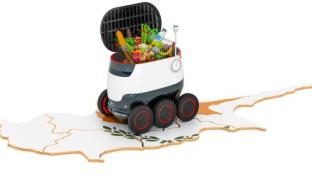A New Era of Transformative Growth: Progressive Grocer’s 89th Annual Report
COMPLETE ANALYSIS
What do gig labor, plant-based crab cakes and nonfungible tokens have in common? They’re all part of the big bet that grocery retailers are making now on the future of the industry.
Two years after one of the most challenging events in world history, Progressive Grocer’s 89th Annual Report and The PG 100 ranking of the top food retailers in North America show that the nearly $3 trillion grocery industry is in the throes of a different kind of transformation this year, one that involves not just new technology or consumer habits, but also the evolution of an industry’s identity.
That’s because the pandemic has changed the American identity: how consumers work, shop and eat. Over the past year, grocers have had to confront a deadly virus, supply chain disruptions, a difficult labor environment and rising costs as the pandemic ebbed and flowed through the lives of the American grocery shopper and worker. Long-term shifts toward online shopping and remote work will have far-reaching societal implications, and the consequences will continue to be felt at the grocery store.
Perhaps this year we’ll see retailers just end up selling groceries in the metaverse — or is it the grocery-verse?
In the meantime, what should grocers in real life be doing to drive growth amid constant change? Be smart about keeping employees healthy and happy. Be prepared to act fast on technology and food trends. Personalize everything, from curbside pickup coupons to store checkout belts to marketing texts so that the customer can’t help but be loyal. And prepare for more supply chain disruptions and higher costs.
If the grocery retailers listed in The PG 100 want to emerge in the same or a better position five or 10 years from now, they will focus on reimagining strategies for the 12 themes driving innovation and grocery growth now: employee experience, physical store design, alternative food trends, foodservice innovation, last-mile speed, purposeful retailing, store-brand premiumization, hyper-localization, checkout-less transactions, retail media, inflation-busting operations and virtual reality. These are the topics poised to have big impacts on grocers’ operations this year and beyond.
[Don't forget to sign up HERE for the June 1 webinar with Progressive Grocer's editorial team for an in-depth discussion of this research.]

1. The People Priority
Success in the grocery industry is a two-way street — or at least a two-way aisle. As retailers focus on customers, they’re increasingly looking inward to ensure worker-friendly operations.
The pandemic era reinforced the importance of essential workers in the grocery industry, and the first two years of the decade have also wrought hiring shortages and the coining of the term “The Great Resignation.” Cascading circumstances are spurring grocery industry leaders to provide their employees with more support across the board.
In today’s competitive environment, grocers are looking to attract and retain workers — and avoid costly labor disputes — by offering more benefits spanning wages, flexible schedules, tuition reimbursement, child care options, and more. In addition to formal benefits, grocers as employers are quickly learning that they need to support their workers by creating a culture of inclusivity, mental and physical wellness, and open, shared communications. Creativity counts: Gig workers in the e-commerce space are responding to inventive app-based scheduling options, while forward-looking grocers are providing new opportunities for employees as automation and technology free up more rote tasks.
People ultimately drive business success, whether it’s the people who shop stores or the people who keep the operation going on a daily basis. Grocery employees have shown remarkable resilience throughout and beyond the pandemic, with retailers able to keep their doors open and, for the most part and whenever possible, their shelves stocked.
In return, grocers can continue to prioritize the health, safety and productivity of their diverse workforce through wages, benefits, and a shared, sincere mindset of collaboration. This will only become more crucial as younger workers demonstrate their preferences for a viable work-life balance, and seek out jobs that are meaningful to them and support their physical and mental well-being.

2. The Store of the Future
The brick-and-mortar store has gained renewed importance in recent years as a means of differentiation and innovation. Not only do technology-enabled bells and whistles make the shopping experience more seamless and exciting for customers, but they also allow retailers to keep track of inventory, gather important data and further perfect their trade.
Artificial intelligence-based robots are rolling out in more banners across the country, providing everything from greetings to shelf management and floor scrubbing. Walmart’s updated store design focuses on a digitally enabled shopping experience, complete with digital directories; Amazon is rapidly expanding its Just Walk Out technology; and myriad other retailers are employing digital shelf tags, cooler doors with digital screens, and so much more.
As we move forward, a tech-enabled shopping experience that makes life easier for both shoppers and retailers has practically become the norm. Expanded payment options and new cashierless checkout formats will proliferate, along with other tech-driven solutions to keep customers engaged and make grocery shopping even more convenient. Following the lead of independent grocers like Choice Market and its multiple checkout options, or Nourish + Bloom and its highly advanced delivery bots, the sky’s the limit for how retailers can reinvent the in-store experience.

3. Plant-Based Enters the Mainstream
As options grow across categories and flexitarianism becomes commonplace, grocers are increasingly treating the plant-based segment as just another lifestyle choice by merchandising such products with their animal protein counterparts. The success of this strategy is undeniable: Back in 2020, a study carried out by the Plant Based Foods Association (PBFA) and The Kroger Co. found that plant-based meat sales increased by 23% when those items were sold in the meat department. Now such placement is expected by plant-based food consumers, who don’t want to go in search of a segregated section to pick up their pea protein burgers or oat milk yogurt.
Since the time of the PBFA/Kroger study, plant-based food sales have continued to surge, reaching an all-time high of $7.4 billion in 2021, despite unsettled economic conditions exacerbated by the pandemic, supply chain issues and inflation, according to recent data from PBFA, The Good Food Institute (GFI) and SPINS.
Meanwhile, an April 2022 report from sales and marketing firm Acosta notes that consumers, concerned with staying healthy amid the pandemic, are increasingly replacing beef, pork and traditional milk products with plant-based alternatives. In fact, 40% of consumers surveyed by Acosta had purchased plant-based meat and/or dairy products within the past six months, with more than half of those surveyed (60%) purchasing such products several times a month.
In the realm of innovation, there’s no doubt that plant-based food products are improving in flavor and texture by leaps and bounds, driven by a record period of investment in companies creating sustainable alternatives to conventional animal-based foods, according to a GFI report, which finds that 73% of the nearly $11.1 billion in capital invested in this area since 2010 has been raised since 2020.

4. Retail Foodservice After COVID
During the pandemic, dining spaces, including those in grocers’ stores, abruptly shut down, obliging retailers to demonstrate their takeout, pickup and delivery prowess when it came to convenient prepared foods. Now, as COVID restrictions ease and consumers return to dining in public places, how can grocers make sure that shoppers stay with them rather than defect to reopened restaurants?
As Erin McCullough-Crume, director of deli and emerging business at Tampa, Fla.-based Bay Food Brokerage, notes in an online Progressive Grocer column, retention of these customers boils down to offering them compelling choices. That means paying close attention to consumers’ evolving demands and preferences in prepared foods. McCullough-Crume cites transparent packaging, fare that looks like it was prepared in-store, diverse offerings from a range of cuisines, bundled products for meal deals, size variety and delivery/pickup options, with heavy promotion of fresh prepared meals and meal bundles on websites and apps, as key ways to keep customers buying supermarket prepared foods. Further, in a February article for PG, Kathleen Hayden discusses the importance of a full array of meal solutions to meet varying shopper needs, including, as at Albertsons, ready-to-eat, ready-to-heat and ready-to-cook options.
Meanwhile, innovations such as ghost kitchens — facilities set up for the preparation of delivery-only meals — are enabling concepts like the off-premise kitchen center opened earlier this year by Kroger’s Ralphs banner and Pasadena, Calif.-based restaurant tech company Kitchen United to bring fresh restaurant-quality meals directly to the Los Angeles-area supermarket chain’s shoppers. Kroger has also worked with Indianapolis-based ClusterTruck to launch on-premise ghost kitchens powered by a proprietary software system that uses custom algorithms to optimize kitchen and delivery operations.
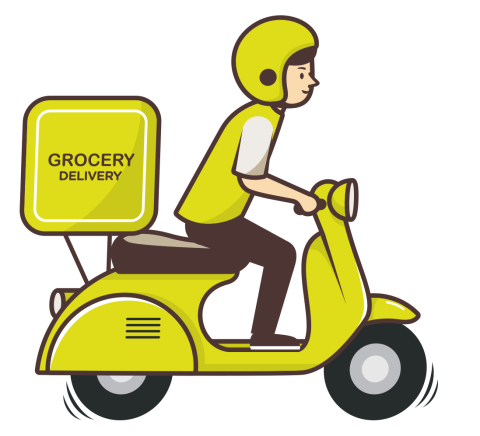
5. The Q-Market
Just because something can be delivered in 10 minutes, does that mean it should be? Obviously, the ever-narrowing delivery windows touted by such burgeoning quick-commerce platforms as FastAF, Gopuff and Gorillas aren’t achievable outside of densely populated urban areas with ample spaces for micro-fulfillment centers, so grocers that can offer only same-day or even half-hour delivery must manage customer expectations when it comes to bringing orders to homes.
That said, in a world where online grocery sales are expected to keep rising, the technology enabling e-commerce delivery is making the process simpler — and, yes, faster — than ever for retailers and shoppers. Companies like Rosie, Mercato, Farmstead and Homesome continue to make online grocery operations accessible and viable for smaller independent grocers, with software that allows them to be up and running as omnichannel retailers in a matter of weeks.
Among larger operators, Walmart and The Kroger Co. are busily building out their respective distribution/fulfillment infrastructures, guaranteeing faster delivery times due to the sheer number of facilities cropping up across the nation. Kroger is adding to its Ocado-powered hub-and-spoke delivery network in geographies where it doesn’t even have brick-and-mortar stores, including Texas and Alabama, while Walmart is opening massive new fulfillment centers in Pennsylvania and Mississippi to support the tech platform that powers its last-mile delivery ecosystem through automation and machine learning.
Beyond delivery time, e-grocer Thrive Market has received recognition for its highly intuitive app driven by past purchases and preferences, as well as an email approach in which the brand delivers a personalized experience by onboarding data and continues to integrate even more advanced personalization elements over time. While these particular attributes may not make groceries arrive any faster, they certainly enhance the overall e-grocery experience, and drive shoppers to use the service again.

6. Purposeful Profitability
“Doing what’s right for the environment.” That’s what Jason Wadsworth, category merchant for packaging, energy and sustainability at Wegmans Food Markets, said when the company revealed on April 14 that it would eliminate plastic bags at all stores by the end of 2022. But food retailers today are focused not just on doing what’s right for the planet, but also on doing what’s right for society as a whole.
From sustainable store design to hyperlocalization of assortments to climate-friendly supply chains, indoor farming, ethical retailing, greener packaging, upcycled foods, and measurable progress when it comes to diversity, equity, inclusion and belonging, food retailers are creating positive changes by actively nurturing healthier communities, fashioning more equitable workplaces and fighting against environmental damage. For example, Ahold Delhaize USA has joined an advanced recycling initiative billed as the first of its kind in the United States. The project recycles flexible plastics from the food supply chain and remakes them into certified-circular food-grade packaging. The initiative is expected to launch this summer and scale over time. Meanwhile, Walmart is asking packaging companies with innovative solutions to submit them online via a new portal. The retailer is aiming to find and implement sustainable packaging solutions across its operations more quickly.
None of this is any wonder. A recent survey from Wunderman Thompson Intelligence has found that an increasing number of consumers believe that retailers and brands should take the lead when it comes to sustainability. In fact, 87% of consumers believe that companies are responsible for protecting the planet and its people. So far this year, grocery retailers have much progress to celebrate when it comes to purposeful retailing.

7. Old Is New Again
Sure, the team at Progressive Grocer is feeling nostalgic as we mark our 100th year. But as we look back at the past, we can’t help but be struck by common threads that have sustained this industry over time, including perennially successful practices and a few full-circle trends.
Things like strong customer service, a robust and relevant product assortment, and store shopability and cleanliness never go out of style. Interestingly, some aspects of the grocery business that were more common a century or even 50 years ago are coming back, albeit in a different form.
The focus on knowing one’s customer is one example. It might not be the proprietor who greets the same customers with a hearty hello and a recollection of their favorite products, but technologies like artificial intelligence let shoppers know that their preferences are being recognized and met.
Similarly, while early stores stocked local items because they didn’t have the logistics to source items on a national basis, today’s retailers are back to touting products sourced within a nearby radius. Even as grocers carry items from all over the country and the world, they seek goods from local farmers, livestock producers and food entrepreneurs, which resonate in a surprise-and-delight way, as well as from an environmental, social and governance standpoint.
This emphasis on local and personalized — both in-person and online — harkens back to the more intimate relationships between grocers and their customers in days gone by, and will likely continue as retailers strive to differentiate their businesses in a competitive omnichannel environment. At the same time, expect grocery stores to continue — and in some cases reclaim — their role as community hubs, whether it’s at in-store cafés and classes, or through special events and outreach programs.

8. Popularity of Private Label
On an upward trajectory for some time now, store-brand products are the preferred choice of consumers looking for more affordable options amid record inflation. These products made impressive gains in the first quarter of 2022, with market research firm IRI finding that store brands outpaced national brands in dollar sales by a margin of 1.3%.
Retailers are heeding the move toward private label purchases with brand extensions that run the gamut from pantry basics and decadent snacks to reformulated cheeses and plant-based chicken nuggets. More premium options are popping up left and right, and several e-commerce and traditional retailers have rolled out their first-ever private label lines.
As a majority of grocers ramp up their private label offerings, and with inflation showing no immediate signs of slowing down, shoppers are more than likely to continue their quest for these lower-priced items. While price will remain a consideration, consumers will also expect a solid premiumization of store-brand products, in common with national-brand offerings across the store. With studies finding that consumers increasingly expect retailers to take the lead on sustainability, private label packaging will also need to become more environmentally friendly.
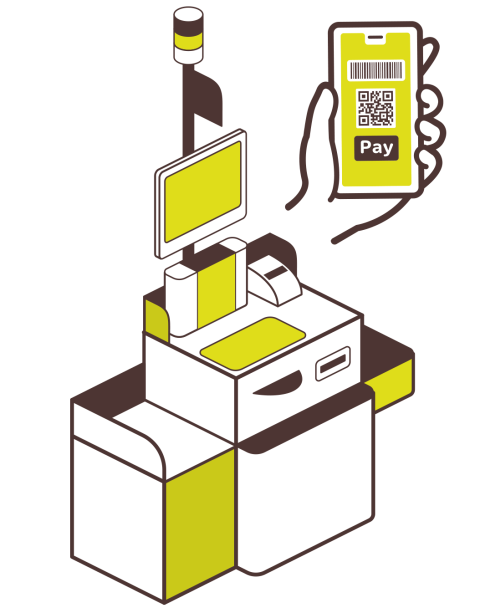
9. Checkout Reborn: Modern Payment Methods
Payment was among the first avenues for customer-facing, tech-enabled innovation at food retail, and the pandemic brought with it a more pressing need for touchless checkout options. Beyond adding more self-checkout stations, grocers are increasingly introducing scan-and-go options and piloting artificial intelligence-powered technology, including Amazon’s rollout of its Just Walk Out technology in full-size supermarkets, and Wakefern Food Corp.’s partnership with Israel-based computer vision startup Trigo Vision.
Digital payment options like Apple Pay, Venmo and PayPal are being more widely accepted, and even cryptocurrency is making inroads at retail. Most experts believe paying with cryptocurrencies such as Bitcoin will become more popular as consumers, especially younger generations, increasingly use this form of payment in their everyday lives. Some even agree that the use of cryptocurrency could overtake credit card payments within several years. Further, a wider rollout of computer vision cameras in stores could potentially give rise to technology that can recognize shoppers, scan items as customers select them and even tie back to credit systems.
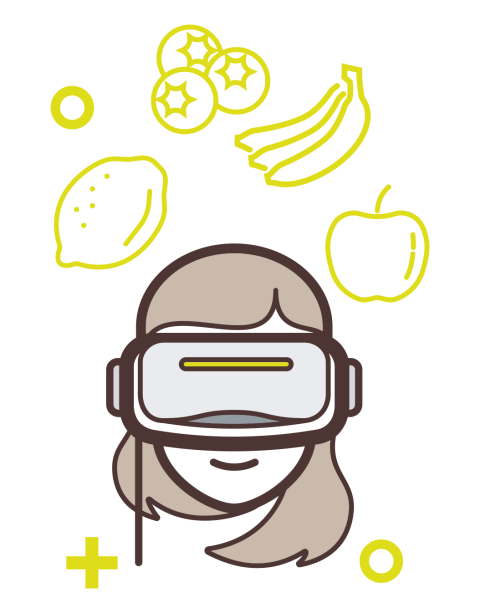
10. Welcome to the Grocery-Verse
Does anyone really believe that soon — very soon — many Americans will be conducting a major part of their lives in virtual reality? Walmart does, if several new trademarks filed in December are any indication. According to the retailer, it plans to make and sell virtual goods, including electronics, home decorations, toys, sporting goods and personal care products. In a separate filing, Walmart said that it would also offer users a virtual currency, as well as nonfungible tokens (NFTs).
It’s not just Walmart. Food companies, including Campbell Soup Co. and Coca-Cola Co., are also getting into the metaverse game. Last year, Campbell celebrated a new label design by diving into the digital art world and dropping its first-ever NFT; all proceeds went to Feeding America. Coca-Cola put four unique NFTs up for auction on the OpenSea online marketplace in late 2021. Proceeds from the auction went to Special Olympics International.
Food retailers and brands taking the metaverse seriously understand that not every consumer will want to have dinner, buy groceries or learn about wine in the metaverse (or foodverse or web3 or NIRL/Not In Real Life). But they also understand that what the metaverse offers is another way for retailers to create connections and community among consumers. Retailers and brands ignoring this nascent opportunity to engage customers and promote themselves do so at their own peril.
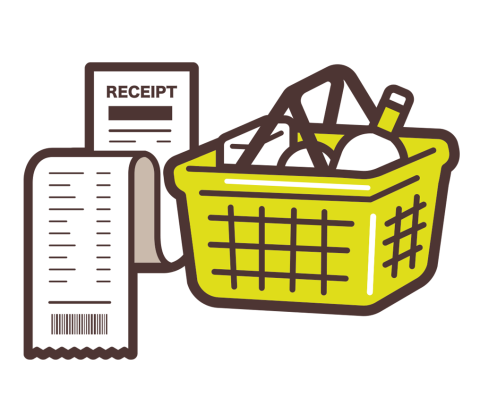
11. Inflation Nation
It’s not what shoppers or grocers want to hear, but it seems like high prices will be sticking around as geopolitical upheaval continues, and as other contributing factors, from supply chain bottlenecks to the still-tentative COVID-19 situation, linger. Many economists have projected inflation to continue into at least the short-term future. Analysts at Bank of America, for instance, expect inflation in the United States to hit 9% by the end of 2022 — even more than the recent 8.8% rate, the highest since 1981.
High prices are the latest in a series of significant disruptions to drive innovations in the grocery space. Certainly, changes are accelerating to help manufacturers and retailers keep a lid on costs, including technologies that allow for better demand forecasting and product pricing. Automation, extending from fulfillment and distribution to seamless omnichannel experiences, improves efficiencies and provides actionable real-time data.
While grocers look to technologies to help them curb prices, they’re also focusing on providing value to their shoppers. Customers have shown a tendency to pay for things they deem valuable, something that retailers can keep in mind when managing categories and promotions. Conveying deals through a range of social media and other channels helps build trust during inflationary times.
Combining resource-saving technologies with tried-and-true tactics to provide value to customers via specials and promotions can help food retailers weather the inflation storm. Having several tools on hand should prove useful even when prices come back in line and the situation is less acute. Value and price are longstanding purchase drivers through many economic states, after all.

12. A Post-Cookie World
The trend of grocers leveraging first-party data and launching retail media networks isn’t new; retail media revenue is expected to reach $50 billion by 2023 in the United States. What is new, however, is that retailers are reimagining the retail media business model to seize the opportunity in the depreciation of third-party cookies. Consumer privacy concerns regarding data collection have led to browsers such as Chrome removing third-party cookie functionality; Apple is also changing the IDFA (identifier for advertisers) in its App Store. These changes are contributing to a seismic shift in how companies acquire, retain and engage with digital shoppers, and grocery retailers are uniquely positioned to benefit from the changing dynamics of the digital media ecosystem.
In April, Digital Labs, the digital, e-commerce and commercial engine for the brands of Ahold Delhaize USA, expanded media partnerships and capabilities available to consumer packaged goods (CPG) companies through its AD Retail Media arm. The new capabilities enable CPGs to reach connected customers through both digital and in-store avenues.
“This is the best time in the history of grocery for brands to invest in retail media,” said Bobby Watts, VP, AD Retail Media’s head of e-commerce merchandising. “At AD Retail Media, we’ve worked with our partners to deploy an enhanced set of retail media offerings that will enable deeper relationships with customers in ways that complement their shopping experience.”
To capture the full retail media opportunity, grocers will need to ramp up their capabilities as e-commerce footprints continue to grow.



